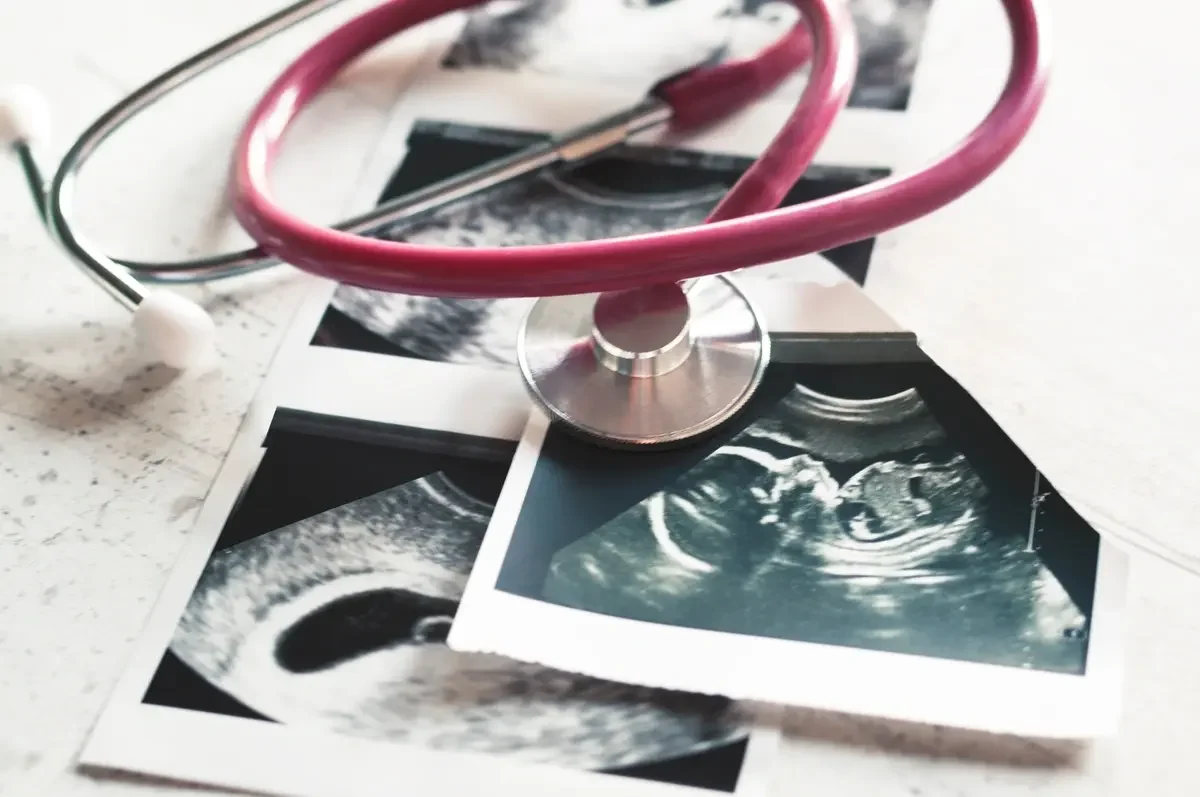How to Maintain Lead Aprons (The Dos and Don'ts)
We've seen some interesting maintenance practices over the years, from physicians washing lead aprons in a car wash to soaking thyroid collars in the scrub sink outside the OR.
Proper maintenance of X-ray garments extends their lifespan and keeps them working well, ensuring patient and staff safety. Improper maintenance can mean replacing aprons sooner or even risks of infections.
What’s the best storage solution for lead aprons? This article outlines the most common dos and don'ts we see when it comes to lead apron maintenance. To ensure longevity and optimal safety with your X-ray garments, follow manufacturer guidelines and our suggestions.
Should Lead Aprons Be Folded?
Lead aprons shouldn’t be folded. The problem with lead apron folding is it compromises the integrity of the internal lead layer. Over time, this can lead to cracks, holes, or tears that make them less effective.
A study from the Journal of Diagnostic and Interventional Radiology assessed 85 lead aprons in a healthcare facility. After conducting thorough X-ray scanning, researchers found that 14 of the aprons had folds in the lead layer that could cause damage in the long term. Additionally, 58 of the aprons were already defective, likely due to storage damage and not being inspected regularly.
Therefore, storing lead aprons properly is crucial to prevent damaging folds. Facilities also need an inspection and maintenance system to ensure aprons are in good condition. Well-maintained aprons will support safer practices during high-dose procedures using fluoroscopy and C-arms, especially when following radiation protection during pregnancy guidelines.
How Should Aprons Be Stored?
How should you store the lead apron and collar to ensure years of effective use? Hanging lead aprons is the best storage option for longevity. It prevents damage by ensuring the attenuation material isn’t folding, bending, or creasing. Many apron racks also have pegs to hang accessories like thyroid collars so they don’t bend.
Lead aprons can be very heavy, so make sure the hangers you purchase can withstand long-term use. Steel hangers are a good option because they are strong and durable.
We commonly receive requests to help hospitals review garment storage options after their first round of scheduled services reveals many garments with cracks and tears in the attenuation. Typically, improper storage is the primary culprit of attenuation damage.
Proper storage is essential for increasing the lifespan of your X-ray garments and ensuring they protect your team.
Dos:
Hang aprons on a heavy-duty hanger or garment-specific hooks on the wall.
Hang the garment by both shoulder panels.
Hanging an apron hastily by one shoulder panel can damage it over time because it isn't properly supported, creating tears in the attenuation material.
Roll garments up like a beach towel to avoid sharp creases, or lay them flat on top of one another when transporting.
Don'ts:
Do not intentionally fold or crease lead garments, as this will can lead to cracks and tears in the attenuation.
How to Properly Hang Lead Aprons
Storage techniques are essential to prevent damage. When placing lead aprons on hangers, ensure they’re:
Hung with both shoulder panels
Placed evenly on the hanger
Not bunched or creased anywhere
Medical teams work at a fast pace, but make sure to instruct team members to take a moment to hang aprons the right way. Haphazardly hanging them from one shoulder panel or bunched up can lead to structural damage similar to folding them.
Lead Apron Rack
The type of storage rack you select is important, too. Common options include:
Wall-mounted racks. They’re sturdy and a great space-saving option for small imaging rooms or storage areas.
Freestanding racks. They provide ample central storage space. However, they’re bulky and not easy to move, so they’re best suited for larger storage rooms.
Mobile storage racks. They’re equipped with wheels, which allow them to be transported between rooms or adjusted to accommodate different storage needs.
How Do You Transport Lead Aprons
The safest options for apron transportation are rolling them like a beach towel or laying them flat. Make sure your team smooths them out so there aren’t any folds, creases, or bunching that would cause damage.
Some manufacturers offer travel storage options for protective garments, including a storage bag that keeps the apron rolled up tightly for secure transport.
Best Practices for Lead Apron Care
Apron longevity is crucial to reducing costs and protecting your staff and patients over the long term. Here are some care guidelines to follow:
Perform Annual Lead Apron Inspections
Annual lead apron inspections are recommended to detect damage early. \ You can also perform a visual and tactile inspection in conjunction with X-ray scans to identify any surface-level damage.
When damage is detected during inspection, it’s essential to perform necessary repairs immediately. However, cracks in the protective material cannot be repaired.
A study by K. Lambert and T. McKeon established rejection criteria for lead aprons with cracks or tears. Those recommendations state that aprons should be replaced when damage exceeds:
15 mm2 over critical organs like the gonads and thyroid
11 mm2 on thyroid shields
670 mm2 on the seams, back, or overlapped areas
When aprons meet these criteria, facilities should follow proper lead garment disposal regulations for health and environmental safety.
Cleaning and Sanitization
Routine and quarterly deep cleaning of lead aprons can reduce hospital-acquired infections, as we’ve learned based on our 10+ years of research and personal experience.
(We’ve also created an in-depth guide on how to clean and sanitize your lead garments.)
Dos:
Wipe down aprons with approved wipes after each use.
We recommend Clorox Hydrogen Peroxide Wipes or Ecolab Quaternary Based Wipes.
Deep clean and sanitize your lead aprons quarterly.
Governing bodies, such as AORN, recommend quarterly cleaning and disinfection of high-touch objects.
Deep cleaning uses friction, which is required to eradicate biofilm and other contaminants properly.
Don'ts:
Do not put lead aprons in a washing machine.
Some manufacturers might say this is okay for routine cleaning, but it is not recommended. Washing machines will likely damage your garments.
Friction is necessary to break down and eradicate bacteria and biofilms on garments but isn’t used in machine washing.
Biofilm and contaminants on the apron can then get into your washer, spreading contaminants to future items washed in the machine.
Do not hose down lead garments or put them in your truck and go through the car wash (yes, we've seen it happen!).
Again, friction is not used in this process, which is necessary to break down and eradicate bacteria and biofilms.
The cleaning agents used in car washes can also damage the apron.
Do not use a cart washer or autoclave.
These use steam and heat for cleaning, which will damage the lead apron.
Do not clean garments with any extreme heat or extreme cold.
Do not expose X-ray garments to direct sunlight.
Do not use Lysol wipes, Febreze, bleach wipes, alcohol, or anything acidic.
These products have chemicals in them that will break down the apron material.
Perform Regular Deep Cleaning
Regular deep cleaning and sanitization are vital for health and safety.
A study by Doctor Jaber from Wayne State University found that 84% of aprons analyzed were colonized with Staphylococcus aureus and tinea species (ringworm). Preventing the build-up of harmful pathogens like these requires more than wiping down aprons after use.
Professional cleaning and sanitization services like we offer at Radiological Care Services (RCS) can help. Our practices follow CDC recommendations and use cleaning products that don’t corrode the material of your aprons.
Avoid Unnecessary Repairs Through Proper Storage
Lead apron storage is a key part of lead apron maintenance, using storage racks, sturdy hangers, and proper techniques to reduce unnecessary damage and extend lead apron lifespans.
Integrity Inspections (X-Ray Scanning)
It's difficult to know if you have dangerous holes, cracks, or tears in the attenuation without an X-ray scan. Undiscovered holes and tears could result in unwanted radiation exposure and lawsuits.
RCS started as a cleaning business because my co-founder and I got ringworm from thyroid collars. Today, we are equally concerned about integrity inspections and the looming litigation that can arise from neglect in this area. Regardless of whether your state requires a radiographic inspection of each garment or not, we believe it is best practice.
Dos:
Regularly scan your lead aprons using X-ray imaging to pick up microtears and cracks that are impossible to see or feel.
Learn your state’s regulations on how often lead aprons should be X-ray scanned.
State laws vary, but we believe the best practice is to scan them yearly to protect staff and patients from radiation.
Outsource scanning to a company like RCS if you do not have enough time in-house.
Don'ts:
Do not rely on visual and palpation tests to examine garments for holes, cracks and tears in the attenuation. Not all holes, cracks or tears are visible this way.
Inventory Management
Inventory management is essential for staff safety and successful audits. We do it for our customers using RADCOMPLY™, and we also wrote a five-step guide to help you manage your lead garment inventory. Below are a few key takeaways.
Dos:
Implement an inventory management system to track your inventory, repairs, cleanings, and integrity scans.
RCS uses RADCOMPLY™, a proprietary, cloud-based software.
Stay up to date on protocols and be prepared for audits.
Outsource this service if needed.
Don'ts:
Do not skip having an inventory management system.
This can lead to inefficient maintenance and leave you unprepared for compliance audits.
Summary & Key Takeaways
Hang aprons by both shoulder panels and avoid folding them,which will lead to cracks and tears much faster than if properly stored.
Deep clean aprons quarterly– do not only use wipes and sprays, as this does not fully clean and sanitize your aprons.
Do annual X-ray scans and do not rely only on visual inspections, which can miss tears invisible to the naked eye.
Use an Inventory Management System to stay organized for maintenance and audits.
Replace aprons when necessary using proper disposal.
Why Maintenance is Important
Protection: Proper maintenance keeps your lead aprons in top-quality shape and more effectively protects staff and patients from radiation.
Reduce Costs: Keeping track of minor tears and repairs extends the lifespan of lead aprons, saving you money on recycling old aprons and ordering new ones.
Staff & Patient Satisfaction: Clean and well-maintained aprons boost staff and patient satisfaction because they're more comfortable and feel safe in the garment. (We hear from hospital workers all the time how nice it is not to have to worry about dirty or worn-out aprons. Some even use it as a value proposition for recruiting!)
Let RCS Handle Your Lead Garment Care
RCS has spent over a decade developing a proven best-practice process to keep our customers safe, including a proprietary two-step cleaning and sanitization process that yields the best outcomes defined by the CDC.
We are setting the standards of care for lead apron management by including yearly scans in our process and offer RADCOMPLY™, our proprietary, cloud-based inventory management software for X-ray garment tracking and regulatory needs.
Contact RCS today or view our website for detailed information on all our services



